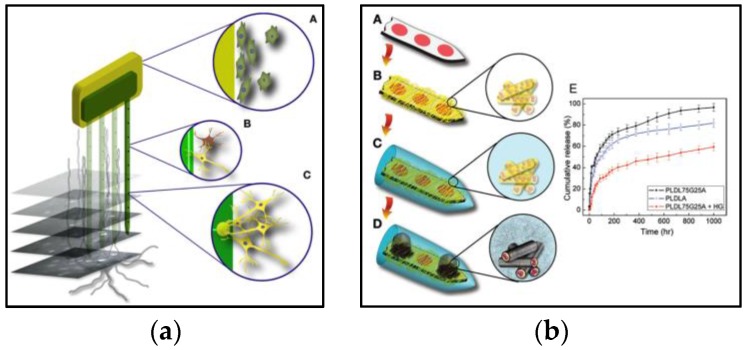Figure 3.
(a) Graphical representations of common surface modification strategies, reprinted with permission from Marin et al. [81]. An optimal surface should consist of an insulation layer that facilitates the adsorption of proteins, adhesion of fibroblast, and adhesion of neurons and glial cells without macrophage reaction and a microelectrode surface that attracts neurons without adhesion of fibroblasts or macrophage reaction; (b) Graphical representation of selective coatings of different bioactive materials on a neural probe, reprinted with permission from Abidian et al. [116]. Drug-loaded biodegradable nanofibers are encapsulated by a biocompatible alginate hydrogel as the insulation layer and poly(3,4-ethylenedioxythiophen) (PEDOT) is electrochemically polymerized on the microelectrode.

